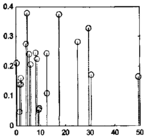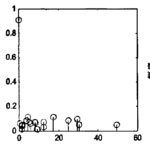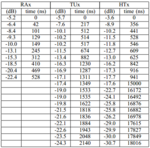bravoegg
Member level 2

When a signal travels through a mutipath channel, there're lots of delayed version of the original signal. So when signal A is transmitted, we receive A0 first, then A1, then A2... and finally An.
My first intuition is the shorter the signal travels, the less it suffers from channel attenuation, then the power of A0 must be larger than A1, A2,...An. But then it occurred to me that, other than power loss due to distance, signal might get absorbed along the way. But I'm not sure how this works.
Here's a graph of power profile according to different delay, under Rayleigh channel.

Here' a graph of power profile according to different delay, under Rich Channel.

My question is is concerning the 1st graph. Why would the shortest path be smaller in terms power?
- - - Updated - - -
with further googling, I found this post:
https://www.gaussianwaves.com/2014/07/power-delay-profile/
in it, a 3GPP spec supports my earlier belief:More delay results more power loss.

My first intuition is the shorter the signal travels, the less it suffers from channel attenuation, then the power of A0 must be larger than A1, A2,...An. But then it occurred to me that, other than power loss due to distance, signal might get absorbed along the way. But I'm not sure how this works.
Here's a graph of power profile according to different delay, under Rayleigh channel.

Here' a graph of power profile according to different delay, under Rich Channel.

My question is is concerning the 1st graph. Why would the shortest path be smaller in terms power?
- - - Updated - - -
with further googling, I found this post:
https://www.gaussianwaves.com/2014/07/power-delay-profile/
in it, a 3GPP spec supports my earlier belief:More delay results more power loss.

